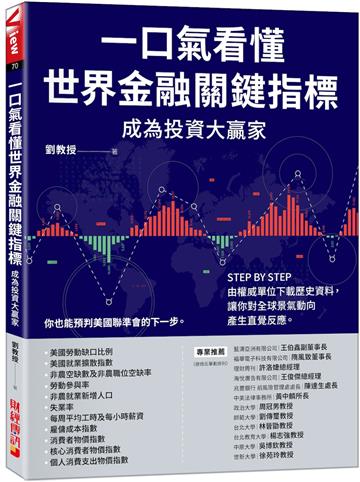Corporate Risk Management 2E
商品資訊
ISBN13:9780470518335
出版社:John Wiley & Sons Inc
作者:Merna
出版日:2008/04/04
裝訂/頁數:精裝/448頁
商品簡介
作者簡介
目次
相關商品
商品簡介
The book analyzes, compares, and contrasts tools and techniques used in risk management at corporate, strategic business and project level and develops a risk management mechanism for the sequencing of risk assessment through corporate, strategic and project stages of an investment in order to meet the requirements of the 1999 Turnbull report. By classifying and categorizing risk within these levels it is possible to drill down and roll-up to any level of the organizational structure and to establish the risks that each project is most sensitive to, so that appropriate risk response strategies may be implemented to benefit all stakeholders.
"The new edition of this book provides a clear insight into the intricacies of corporate risk management and the addition of the case study exemplars aids understanding of the management of multiple projects in the real world." - Professor Nigel Smith, Head of the School of Civil Engineering, University of Leeds
"The new edition of this book provides a clear insight into the intricacies of corporate risk management and the addition of the case study exemplars aids understanding of the management of multiple projects in the real world." - Professor Nigel Smith, Head of the School of Civil Engineering, University of Leeds
作者簡介
Dr Tony Merna, BSc, MPhil, PhD, graduated with a Doctor of Philosophy degree from UMIST for his work on risk management in corporate organisations. Tony then gained a Doctor of Philosophy degree from UMIST for his research into the assessment of risks in portfolios of projects. Tony is currently working for a London based Investment Boutique focusing in Structured Finance; more specifically infrastructure.
Dr Faisal F. Al-Thani, BSc, MSc, PhD, is Senior Director and Head of Business Development – Middle East for Maersk Oil Qatar. A petroleum engineer by profession, he has over 21 years’ experience in the planning, design, operation, maintenance and finance strategies of oil and gas projects. Faisal is also a board member of the Marsh International Risk Council.
Dr Faisal F. Al-Thani, BSc, MSc, PhD, is Senior Director and Head of Business Development – Middle East for Maersk Oil Qatar. A petroleum engineer by profession, he has over 21 years’ experience in the planning, design, operation, maintenance and finance strategies of oil and gas projects. Faisal is also a board member of the Marsh International Risk Council.
目次
1 Introduction.
1.1 Introduction.
1.2 Why Managing Risk is Important.
1.3 General Definition of Risk Management.
1.4 Background and Structure.
1.5 Aim.
1.6 Scope of the Book.
2 The Concept of Risk and Uncertainty and the Sources and Types of Risk.
2.1 Introduction.
2.2 Background.
2.3 Risk and Uncertainty: Basic Concepts and General Principles.
2.4 The Origin of Risks.
2.5 Uncertainties.
2.6 Sources of Risk.
2.7 Typical Risks.
2.8 Perceptions of Risk.
2.9 Stakeholders in an Investment.
2.10 Summary.
3 The Evolution of Risk Management and the Risk Management Process.
3.1 Introduction.
3.2 The Evolution of Risk Management.
3.3 Risk Management.
3.4 The Risk Management Process – Identification, Analysis and Response.
3.5 Embedding Risk Management into Your Organisation.
3.6 Risk Management Plan.
3.7 Executive Responsibility and Risk.
3.8 Summary.
4 Risk Management Tools and Techniques.
4.1 Introduction.
4.2 Definitions.
4.3 Risk Analysis Techniques.
4.4 Qualitative Techniques in Risk Management.
4.5 Quantitative Techniques in Risk Management.
4.6 Quantitative and Qualitative Risk Assessments.
4.7 Value Management.
4.8 Other Risk Management Techniques.
4.9 Country Risk Analysis.
4.10 Summary.
5 Financing Projects, their Risks and Risk Modelling.
5.1 Introduction.
5.2 Corporate Finance.
5.3 Project Finance.
5.4 Financial Instruments.
5.5 Debt 116
5.6 Mezzanine Finance Instruments.
5.7 Equity.
5.8 Financial Risks.
5.9 Non-Financial Risks Affecting Project Finance.
5.10 Managing Financial Risks.
5.11 Risk Modelling.
5.12 Types of Risk Software.
5.13 Summary.
6 Portfolio Analysis and Cash Flows.
6.1 Introduction.
6.2 Selecting a Portfolio Strategy.
6.3 Constructing the Portfolio.
6.4 Portfolio of Cash Flows.
6.5 The Boston Matrix.
6.6 Scenario Analysis.
6.7 Diversification.
6.8 Portfolio Risk Management.
6.9 Cross-Collateralisation.
6.10 Cash Flows.
6.11 An Example of Portfolio Modelling.
6.12 Summary.
7 Risk Management at Corporate Level.
7.1 Introduction.
7.2 Definitions.
7.3 The History of the Corporation.
7.4 Corporate Structure.
7.5 Corporate Management.
7.6 Corporate Functions.
7.7 Corporate Strategy.
7.8 Recognising Risks.
7.9 Specific Risks at Corporate Level.
7.10 The Chief Risk Officer.
7.11 How Risks are Assessed at Corporate Level.
7.12 Corporate Risk Strategy.
7.13 Corporate Risk: An Overview.
7.14 The Future of Corporate Risk.
7.15 Summary.
8 Risk Management at Strategic Business Level.
8.1 Introduction.
8.2 Definitions.
8.3 Business Formation.
8.4 Strategic Business Units.
8.5 Business Strategy.
8.6 Strategic Planning.
8.7 Recognising Risks.
8.8 Portfolio Theory.
8.9 Programme Management.
8.10 Business Risk Strategy.
8.11 Tools at Strategic Business Unit Level.
8.12 Strategic Business Risk: An Overview.
8.13 Summary.
9 Risk Management at Project Level.
9.1 Introduction.
9.2 The History of Project Management.
9.3 Definitions.
9.4 Project Management Functions.
9.5 Project Strategy Analysis.
9.6 Why Project Risk Management is Used.
9.7 Recognising Risks.
9.8 Project Risk Strategy.
9.9 The Future of Project Risk Management.
9.10 Summary.
10 Risk Management at Corporate, Strategic Business and Project Levels.
10.1 Introduction.
10.2 Risk Management.
10.3 The Risk Management Process
10.4 Common Approaches to Risk Management by Organisations.
10.5 Model for Risk Management at Corporate, Strategic Business and Project Levels.
10.6 Summary.
11 Risk Management and Corporate Governance.
11.1 Introduction.
11.2 Corporate Governance.
11.3 Corporate Governance Approach in France.
11.4 Corporate Governance Approach by the European Commission.
11.5 Corporate Governance and Internal Control.
11.6 Summary.
12 Risk Management and Basel II.
12.1 Introduction.
12.2 Risk Rating System (RRS).
12.3 Borrower Risk Rating System and Probability of Default.
12.4 Risk Rating and Provisioning.
12.5 Risk Rating and Pricing.
12.6 Methodology of RRS and Risk Pricing.
12.7 Grid Analysis or Standardising the Risk Analysis.
12.8 Regulation in Operational Risk Management.
12.9 Summary.
13 Quality Related Risks.
13.1 Introduction.
13.2 Defining Quality Risks.
13.3 Standardisation – ISO 9000 Series.
13.4 Quality Risks in Manufacturing Products.
13.5 Quality Risks in Services.
13.6 Quality Control and Approaches to Minimise Product Quality Risks.
13.7 Summary.
14 CASE STUDY 1: Risks in Projects in the Pharmaceutical Industry.
14.1 Introduction.
14.2 The Pharmaceutical Industry.
14.3 Filing with the Regulatory Authority.
14.4 Identification and Response to Risks Encountered in DDPs.
14.5 Summary.
15 CASESTUDY2: Risk Modelling of Supply and Off-take Contracts in a Petroleum Refinery Procured through Project Finance.
15.1 Introduction.
15.2 Financing a Refinery Project.
15.3 Bundling Crude Oil Contracts.
15.4 Assessing a Case Study.
15.5 Bundle Solutions After Risk Management.
15.6 Summary.
16 CASE STUDY 3: Development of Risk Registers at Corporate, Strategic Business Unit and Project levels and a Risk Statement.
16.1 Introduction.
16.2 Levels of Risk Assessment.
16.3 Amalgamation and Analysis of Risks Identified.
16.4 The Project: Baggage Handling Facility.
16.5 Risk Statement.
16.6 Summary.
17 CASE STUDY 4: Development of a Typical Risk Statement to Shareholders.
17.1 Introduction.
17.2 UUU Overview and Risk Register.
17.3 Corporate Risk Register.
17.4 Strategic Business Units Risk Register.
17.5 Project Level Risk Register.
17.6 Risk Statement to Shareholders.
17.7 Summary.
References.
Index.
1.1 Introduction.
1.2 Why Managing Risk is Important.
1.3 General Definition of Risk Management.
1.4 Background and Structure.
1.5 Aim.
1.6 Scope of the Book.
2 The Concept of Risk and Uncertainty and the Sources and Types of Risk.
2.1 Introduction.
2.2 Background.
2.3 Risk and Uncertainty: Basic Concepts and General Principles.
2.4 The Origin of Risks.
2.5 Uncertainties.
2.6 Sources of Risk.
2.7 Typical Risks.
2.8 Perceptions of Risk.
2.9 Stakeholders in an Investment.
2.10 Summary.
3 The Evolution of Risk Management and the Risk Management Process.
3.1 Introduction.
3.2 The Evolution of Risk Management.
3.3 Risk Management.
3.4 The Risk Management Process – Identification, Analysis and Response.
3.5 Embedding Risk Management into Your Organisation.
3.6 Risk Management Plan.
3.7 Executive Responsibility and Risk.
3.8 Summary.
4 Risk Management Tools and Techniques.
4.1 Introduction.
4.2 Definitions.
4.3 Risk Analysis Techniques.
4.4 Qualitative Techniques in Risk Management.
4.5 Quantitative Techniques in Risk Management.
4.6 Quantitative and Qualitative Risk Assessments.
4.7 Value Management.
4.8 Other Risk Management Techniques.
4.9 Country Risk Analysis.
4.10 Summary.
5 Financing Projects, their Risks and Risk Modelling.
5.1 Introduction.
5.2 Corporate Finance.
5.3 Project Finance.
5.4 Financial Instruments.
5.5 Debt 116
5.6 Mezzanine Finance Instruments.
5.7 Equity.
5.8 Financial Risks.
5.9 Non-Financial Risks Affecting Project Finance.
5.10 Managing Financial Risks.
5.11 Risk Modelling.
5.12 Types of Risk Software.
5.13 Summary.
6 Portfolio Analysis and Cash Flows.
6.1 Introduction.
6.2 Selecting a Portfolio Strategy.
6.3 Constructing the Portfolio.
6.4 Portfolio of Cash Flows.
6.5 The Boston Matrix.
6.6 Scenario Analysis.
6.7 Diversification.
6.8 Portfolio Risk Management.
6.9 Cross-Collateralisation.
6.10 Cash Flows.
6.11 An Example of Portfolio Modelling.
6.12 Summary.
7 Risk Management at Corporate Level.
7.1 Introduction.
7.2 Definitions.
7.3 The History of the Corporation.
7.4 Corporate Structure.
7.5 Corporate Management.
7.6 Corporate Functions.
7.7 Corporate Strategy.
7.8 Recognising Risks.
7.9 Specific Risks at Corporate Level.
7.10 The Chief Risk Officer.
7.11 How Risks are Assessed at Corporate Level.
7.12 Corporate Risk Strategy.
7.13 Corporate Risk: An Overview.
7.14 The Future of Corporate Risk.
7.15 Summary.
8 Risk Management at Strategic Business Level.
8.1 Introduction.
8.2 Definitions.
8.3 Business Formation.
8.4 Strategic Business Units.
8.5 Business Strategy.
8.6 Strategic Planning.
8.7 Recognising Risks.
8.8 Portfolio Theory.
8.9 Programme Management.
8.10 Business Risk Strategy.
8.11 Tools at Strategic Business Unit Level.
8.12 Strategic Business Risk: An Overview.
8.13 Summary.
9 Risk Management at Project Level.
9.1 Introduction.
9.2 The History of Project Management.
9.3 Definitions.
9.4 Project Management Functions.
9.5 Project Strategy Analysis.
9.6 Why Project Risk Management is Used.
9.7 Recognising Risks.
9.8 Project Risk Strategy.
9.9 The Future of Project Risk Management.
9.10 Summary.
10 Risk Management at Corporate, Strategic Business and Project Levels.
10.1 Introduction.
10.2 Risk Management.
10.3 The Risk Management Process
10.4 Common Approaches to Risk Management by Organisations.
10.5 Model for Risk Management at Corporate, Strategic Business and Project Levels.
10.6 Summary.
11 Risk Management and Corporate Governance.
11.1 Introduction.
11.2 Corporate Governance.
11.3 Corporate Governance Approach in France.
11.4 Corporate Governance Approach by the European Commission.
11.5 Corporate Governance and Internal Control.
11.6 Summary.
12 Risk Management and Basel II.
12.1 Introduction.
12.2 Risk Rating System (RRS).
12.3 Borrower Risk Rating System and Probability of Default.
12.4 Risk Rating and Provisioning.
12.5 Risk Rating and Pricing.
12.6 Methodology of RRS and Risk Pricing.
12.7 Grid Analysis or Standardising the Risk Analysis.
12.8 Regulation in Operational Risk Management.
12.9 Summary.
13 Quality Related Risks.
13.1 Introduction.
13.2 Defining Quality Risks.
13.3 Standardisation – ISO 9000 Series.
13.4 Quality Risks in Manufacturing Products.
13.5 Quality Risks in Services.
13.6 Quality Control and Approaches to Minimise Product Quality Risks.
13.7 Summary.
14 CASE STUDY 1: Risks in Projects in the Pharmaceutical Industry.
14.1 Introduction.
14.2 The Pharmaceutical Industry.
14.3 Filing with the Regulatory Authority.
14.4 Identification and Response to Risks Encountered in DDPs.
14.5 Summary.
15 CASESTUDY2: Risk Modelling of Supply and Off-take Contracts in a Petroleum Refinery Procured through Project Finance.
15.1 Introduction.
15.2 Financing a Refinery Project.
15.3 Bundling Crude Oil Contracts.
15.4 Assessing a Case Study.
15.5 Bundle Solutions After Risk Management.
15.6 Summary.
16 CASE STUDY 3: Development of Risk Registers at Corporate, Strategic Business Unit and Project levels and a Risk Statement.
16.1 Introduction.
16.2 Levels of Risk Assessment.
16.3 Amalgamation and Analysis of Risks Identified.
16.4 The Project: Baggage Handling Facility.
16.5 Risk Statement.
16.6 Summary.
17 CASE STUDY 4: Development of a Typical Risk Statement to Shareholders.
17.1 Introduction.
17.2 UUU Overview and Risk Register.
17.3 Corporate Risk Register.
17.4 Strategic Business Units Risk Register.
17.5 Project Level Risk Register.
17.6 Risk Statement to Shareholders.
17.7 Summary.
References.
Index.
主題書展
更多
主題書展
更多書展今日66折
您曾經瀏覽過的商品
購物須知
外文書商品之書封,為出版社提供之樣本。實際出貨商品,以出版社所提供之現有版本為主。部份書籍,因出版社供應狀況特殊,匯率將依實際狀況做調整。
無庫存之商品,在您完成訂單程序之後,將以空運的方式為你下單調貨。為了縮短等待的時間,建議您將外文書與其他商品分開下單,以獲得最快的取貨速度,平均調貨時間為1~2個月。
為了保護您的權益,「三民網路書店」提供會員七日商品鑑賞期(收到商品為起始日)。
若要辦理退貨,請在商品鑑賞期內寄回,且商品必須是全新狀態與完整包裝(商品、附件、發票、隨貨贈品等)否則恕不接受退貨。
























